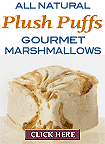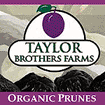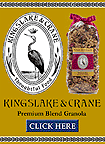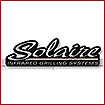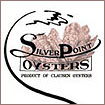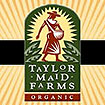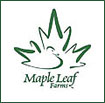Superfoods leading to super sales, but for how long?
London,
Friday 10 August 2007 - The 65% of consumers who are trying to
eat more healthily are no longer focused solely on reducing food
intake or on moderating their consumption of perceived dietary
evils such as fats, sugars and salts. Instead, new report* from
independent market analyst Datamonitor shows a trend towards positive
nutrition is emerging whereby shoppers are actively seeking nutrient
rich fresh, organic and functional food and drinks. As a result,
superfoods and drinks, like acai and goji berries are seeing a
surge in demand. Superfoods and drinks are rich in specific nutrients
and phyto-chemicals (i.e. anti-oxidants) and are promoted as being
able to improve health condition and/or disease prevention.
The trend towards positive nutrition is well reflected by the
recent popularization of superfoods, especially in the UK and
US, comments Michael Hughes, Consumer Markets Analyst at Datamonitor
and report author.
Consumers looking for healthy choices but with a positive focus
More than half of the 5413 European and US consumers surveyed
told Datamonitor that they had taken more active steps to eat
and drink more healthily in 2006. Its the food and beverages offering
specific health benefits beyond basic nutrition that are increasingly
valued. By 2011, Datamonitor expects the US and Europes functional
food and drink market will be almost double that of 2001. Many
food and drinks associated with superfood status have also enjoyed
healthy growth in the last five years and this in part can be
attributed to this status. The popularization of superfoods means
that many food and drinks now have a healthy-halo which significantly
influences consumer preferences comments Hughes.
Super products that lead to super sales
There are a number of product and market trends reflecting the
desire to consume more nutrient rich superfoods:
* Exotic, highly fashionable fruits such as acai berries, goji
berries and pomegranates have all risen in popularity. Pomegranate
is currently one of the most fashionable superfood ingredients.
In the period January 2005 to May 2007, there had already been
a 500% increase in the number of products using pomegranate as
an ingredient compared to the period 1999-2004. Right now, pomegranate
is the hot ingredient, but this is likely to be superseded given
that new ingredients are being continuously touted. Monitoring
these developments will be vital if industry players are going
to fully capitalize on the superfoods movement. Rich pickings
can be had from those players who correctly identify the next
hot ingredient and/or flavor, comments Hughes.
* Soy product sales more than tripled in Western Europe in the
period 2001-2006. Sales in the US nearly doubled in the same time
period. The broader nutritional benefits associated with soy (which
has lead to its superfood classification) is a key driver.
* Green tea sales have grown substantially in the US. The market
grew from US$119 million in 2001 to US$160 million in 2006. Such
growth in Europe was not as apparent where the notion of superfoods
is less apparent.
* Nuts and seeds sales are also growing in both the US and UK
as consumers increasingly perceive such products as a healthy
snacking alternative.
Increased
consumption of Superfoods is an extension of other trends Datamonitor
identifies a number of factors influencing the growth in popularity
of superfoods and drinks. It identified that European and US shoppers
believe that consuming fresh food and drinks is considered to
be the most important route to a healthy diet.
Furthermore,
more and more consumers want new taste and flavor experiences.
These are big factors in why superfoods have gained popularity.
The superfood trend merely goes hand in hand with the trend towards
functionality, but also reflects consumers desire to consume natural,
fresh and more exotic variants comments Hughes
Healthy snacks
Time pressures and the desire for a quick-fix is one answer to
the fact that in 2005 alone, men in Europe missed on average 105
meals per year, compared to 94 for women. By comparison men in
the US skipped 154 meals per year compared to 129 for women**.
Datamonitor identifies an opportunity for manufacturer to respond
to these time constraints by offering nutritionally enhanced snacks
as a substitution for missed meals.
A word of caution going forward
Questions arise about the ethnical implications of superfoods
and drink
Many Superfood products originate from countries away from the
US or European market, meaning that the high cost and higher carbon
footprints do not echo the increasing ethical/environmental concerns
of todays society. The counter attack to this argument is that
such Superfood is economically helping the rainforest to stay
alive.
Careful Branding
Datamonitor believes that the superfood label has been effective
in adding much needed vibrancy to healthy eating messages. After
all, a "superfood" diet is unusual and refreshing in
that the focus is on general health promotion rather than losing
weight. Nevertheless, the analysts are cautious about the future,
especially explicit superfood branding initiatives. While predicting
that consumers will continue to demand more "good-for-you"
products that provide both health and taste benefits, Datamonitor
recommends manufacturers and retailers simply focus on incorporating
good content into their products but not overly promote the products
on the basis of superfood branding. The notion of superfoods has
already been subject to fierce criticism and consumers are savvier
and seeking to consume if not always managing a nutritionally
balanced diet from a diverse range of food types. It is therefore
important not to promote nutrient rich (superfoods) as a magic
bullet/ quick-fix solution.
See
www.datamonitor.com
for further details. |




